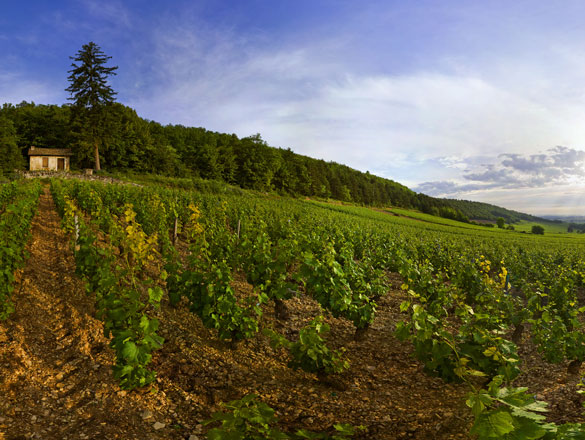

The vineyards of Bourgogne produce some great wines with a historical and international reputation. However, the region is not simply limited to its iconic appellations. In addition to its Village Premier Cru and Grand Cru AOCs, it also produces a range of wonderful Régionale and Village appellations to explore.
You will also find a full list of the Bourgogne’s Climats and lieux-dits on this page.
Check out the complete list of the 84 Bourgogne appellations.
However, your exploration has only just begun. Bourgogne wines have never before offered such high quality. Besides our range of internationally celebrated wines, try some of our lesser-known appellations where there are lots of surprises in store.
And for a fun way to find out more about the wines on offer, try out our “Which Bourgogne wine is right for me?” quiz, or check out Bourgogne Maps to take an interactive tour of the region.
Village appellation
VIGNOBLE DE LA CÔTE DE BEAUNE
31 juillet 1937
Red exclusively - Pinot Noir.
Area under production*:
1 hectare (ha) = 10,000 m2 = 24 «ouvrées»
4.46 ha (including 4.10 ha Premier Cru)
Average annual yield**:
1 hectolitre (hl) = 100 litres = 133 bottles
145 hl (including 132 hl Premier Cru)
*In 2022 **5-year average, 2017-2021
Appellation Village of the Côte de Beaune region (Côte-d’Or).
This appellation includes 7 Premiers Crus Climats.
The white wines carry the appellation MEURSAULT or the appellation PULIGNY-MONTRACHET depending on the location of the vineyard.
Producing communes : Meursault, Puligny-Montrachet.
The appellation BLAGNY and BLAGNY PREMIER CRU may be followed by the name of a specific Climat.

The colour of the Blagny reds is a ruby/crimson deepening towards a purplish black-cherry hue that is reminiscent of twilight. The fruity nose exhibits the typically Burgundian scent spectrum of small red fruits (strawberry, gooseberry) or black fruits (blackcurrant, blackberry). With age, leather, pepper, cocoa, liquorice and musky scents evolve. Well and solidly built, this broad-shouldered wine needs some cellar time for its chewiness to melt a little. It has just the right amount of flesh to give it a good, lithe, and attractive body. Blagny is an island of red wine in a sea of whites.

Red: Blagny impresses with its balanced, four-sided structure. Its natural team-mates, therefore, are firm-fleshed roasts (beef or pork) with a touch of sweetness as well as poultry-based stews and superior offal. Its concentration of aromas makes it an ideal companion to spicy exotic dishes such as a good meat couscous or a chili con carne. It is also well-suited to strong cheeses such as Epoisses, Ami du Chambertin, or farmhouse Munster.
Serving temperature: 14 to 16°C.

Nestled between the vineyards of Puligny-Montrachet and those of Meursault, the hamlet of Blagny enjoys one of the finest views of the Côte de Beaune. It grows red wines which carry the appellation BLAGNY or BLAGNY PREMIER CRU, with or without the name of the specific Climat, but its white wines belong to the PULIGNY-MONTRACHET or MEURSAULT appellations. These vineyards were being exploited as early as the 12th century by Cistercian monks from Maizières known as the « Montrachet fathers ». The official grant of AOC status dates from 1937.
The words Côte de Beaune may be added to the name of the Blagny appellation.

At altitudes of 340 to 400 metres, this hillsope lies on marls overlain by limestone scree. Lower down are clay-limestone soils. There are observable differences between some of the Premiers Crus vineyards: Hameau de Blagny, for example, has rich, deep and pebbly soil while La Garenne is rockier and more south-facing.
